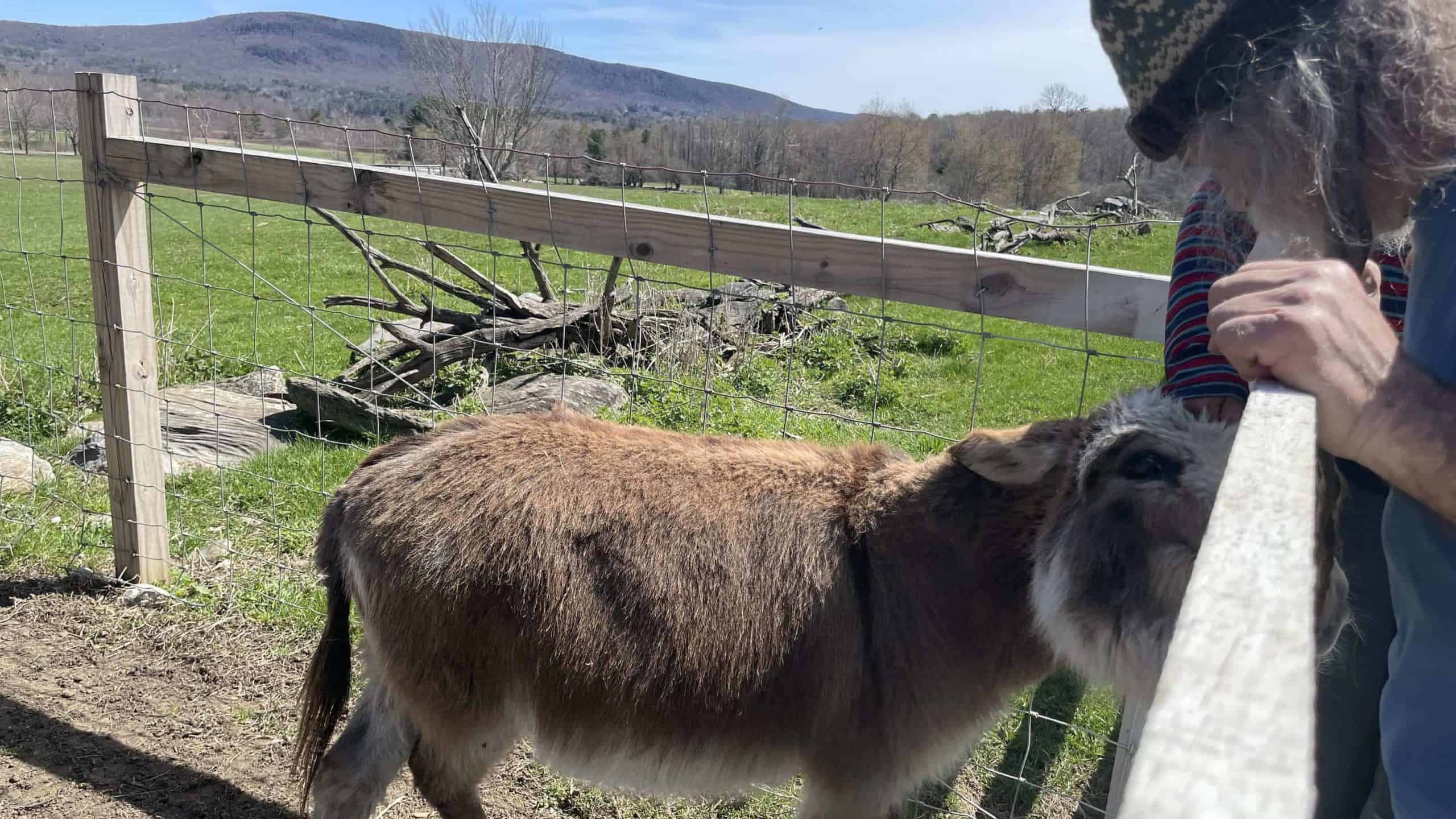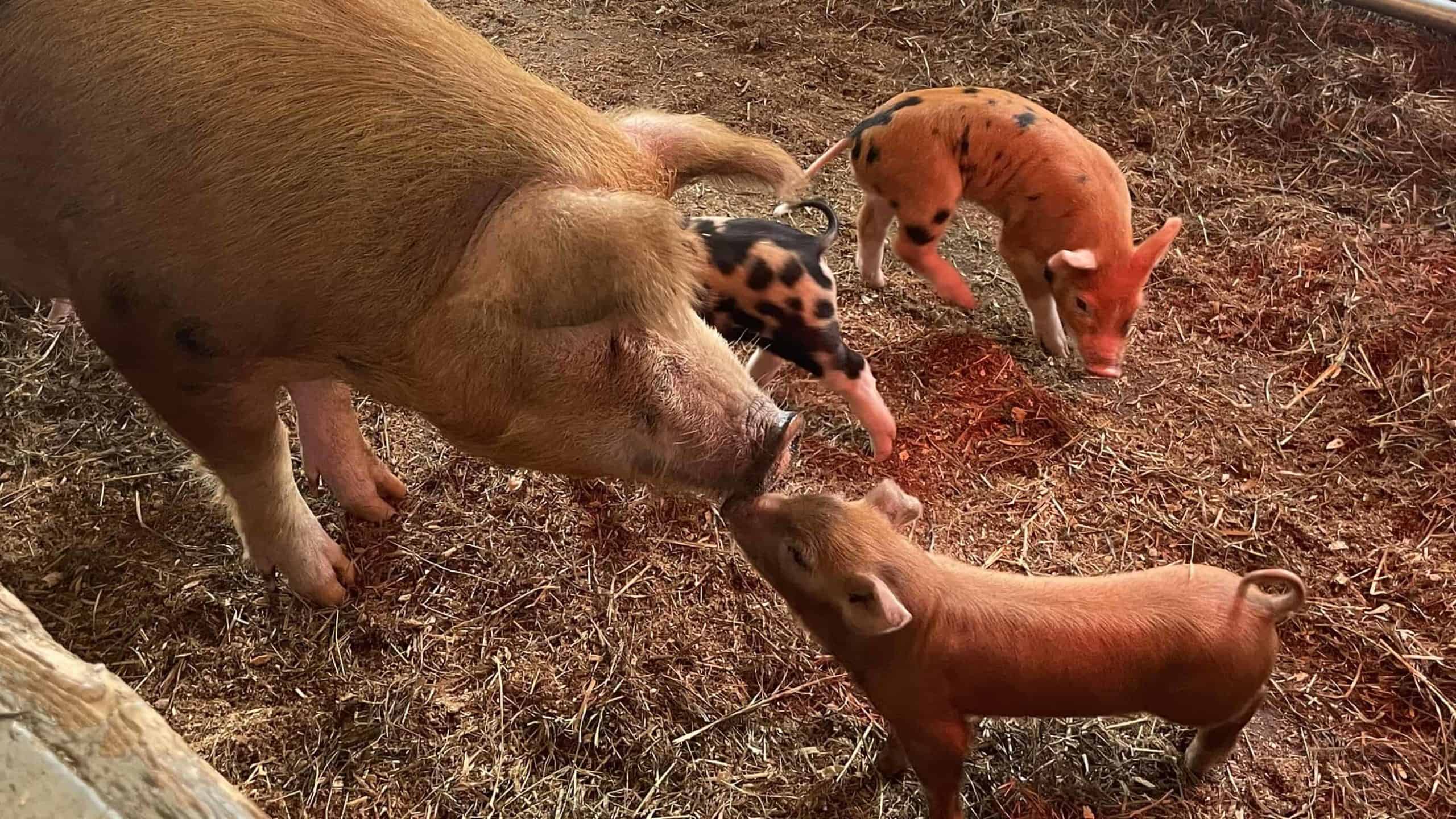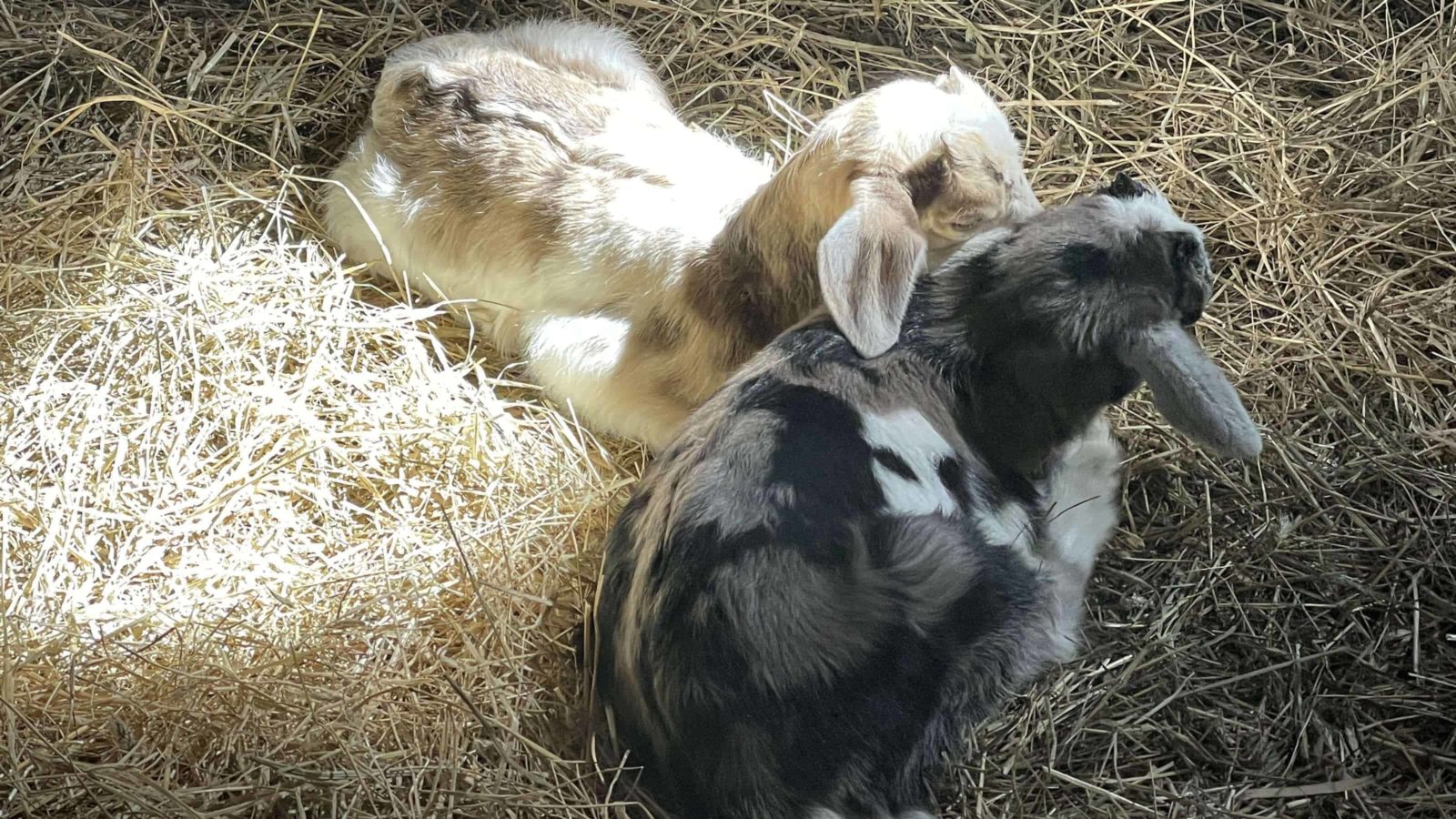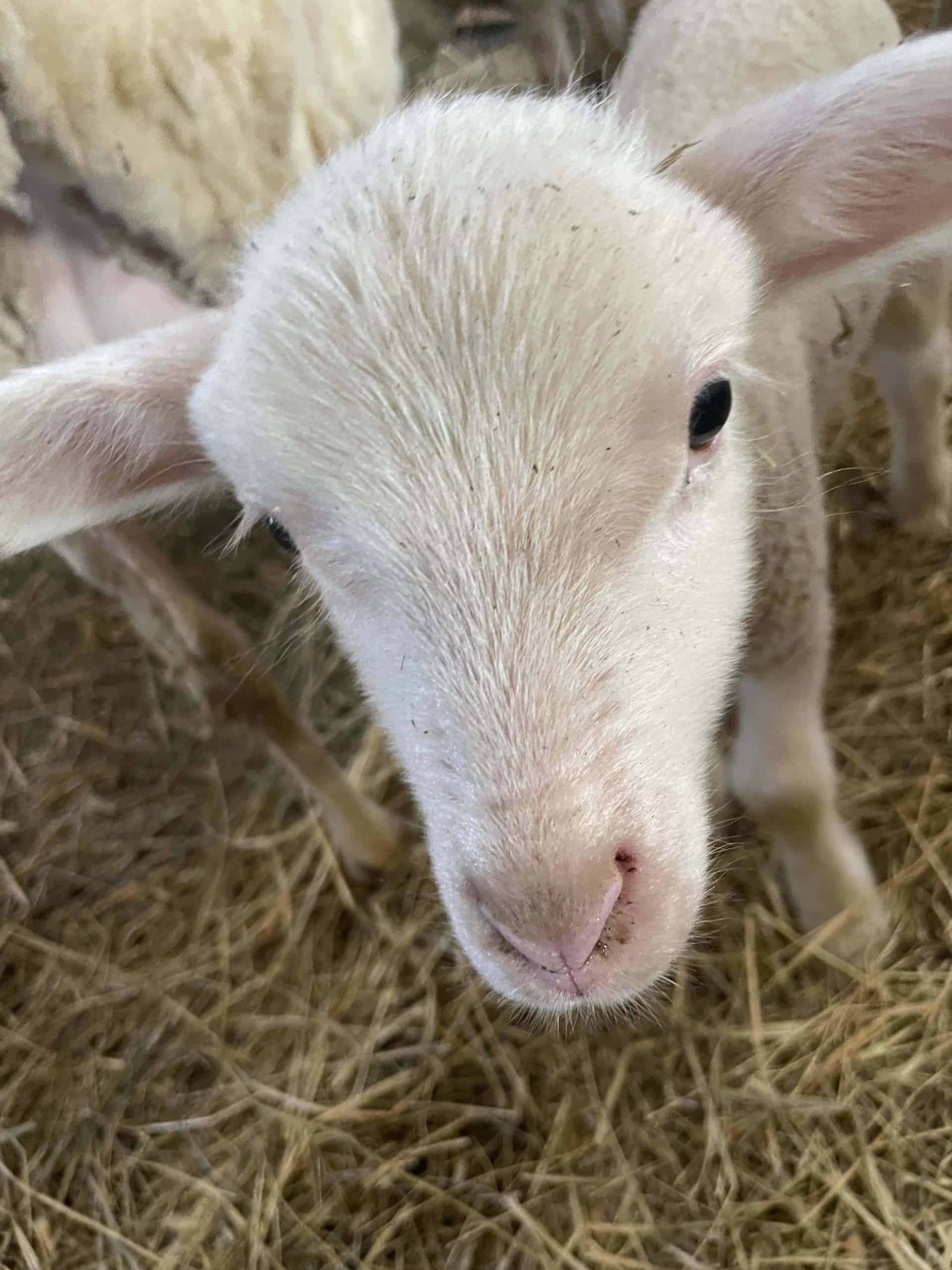The barn is different on a spring night. Calves lie in the hay like deer in the undergrowth. Lambs sleep on their mother’s backs, and sometimes a chicken will join them for the warmth.
“At night animals take on a whole different look,” said farm manager Bill Mangiardi at Hancock Shaker Village. He will sit quietly in the Round Stone Barn in the small hours, bottle feeding a lamb whose mother hasn’t had enough milk for twins, and listening to the stillness.
During the day, the village fills with sound — lambs and chicks, kid goats and calves and piglets, and hundreds of children are here for the 20th annual festival of baby animals, as the village opens for a new year.

The Round Stone Barn catches sunlight on a spring day at Hancock Shaker Village.
A young lamb has soft, dense wool, still closely curled. Mangiardi holds her back feet cupped in one hand, supporting her, and she noses gently his sweater.
Baby Animals has grown in his care, said executive director Jennifer Trainer Thompson. When he came it was a modest festival, and now the village sees more than a quarter of their annual visitors in these few weeks between mud season and the full green of spring.
This spring, the village has more babies than they have often had, Mangiardi said — as the festival opened, he had 13 lambs, four kid goats and another one due, eight piglets, two bottle-fed calves and two more coming … and two miniature donkeys.

Tony Pisano takes a break from demonstrating spinning with the weavers guild to make friends with a miniature donkey.
And after two years of pandemic restrictions, this spring young visitors can pat the babies again, carefully, under the eyes of volunteers.
In the dairy ell, in a straw-lined pen, a sow, a new mother, lies protectively beside eight piglets three weeks old. They are curled up together in a sleepy pile, all clean pink with dark splashes, and small as house cats.
They have already tripled or quadrupled in size, Mangiardi said. He and Christine McCue, livestock manager at the Shaker village, were there when the piglets were born, and they were small enough to hold in one hand. She told him she had never seen something so small get born, especially from a sow larger than a Saint Bernard. The mother was born a year ago in April, he said, and she weighs upwards of 300 pounds by now.
“Pigs are very clean if you let them be clean,” he said. “It was written in the Shaker journals that it was a pleasure to walk through a Shaker pig pen, and that’s how we keep them here.”

A sow touches noses with a piglet at the annual baby animals festival at Hancock Shaker Village.
The are also, contrary to popular belief, one of the only animals that won’t overeat, he added. They have small stomachs, and they eat frequently but lightly.
He lifts one gently by the back feet.
“If you do this right, they won’t squeal,” he said — as the piglet promptly protested, and the sow and all the family scrambled up to see what was happening. Pigs are closely related to bears, Mangiardi said, and they are alertly protective of their young ones. She settles down again, and the piglets take the chance to nurse. It takes an amazing amount of food, Mangiardi said, to keep a mother pig fed while she’s nursing.
“What you do is, you feed the mother and the mother feeds the babies,” he said.
The sow answers in low rhythmic sounds in her throat as her babies drink. She’s talking to them, McCue said.
“When sheep and goats are nursing, the mothers make a chittering sound,” she said, “and that’s their communication with their babies. That’s what she’s doing, and she’ll do that the whole time when they nurse. Sometimes you can hear them do that before the babies are born, like they’re talking to their babies.”

Young lambs circle around their mother in the dairy ell at the annual baby animals festival at Hancock Shaker Village.
McCue lifts up two new buck kid goats, and they rest against her, one on each hip, dun and grey and white.
“I just like calling the ones with big ears Yoda,” Mangiardi said, laughing. “They look like little Yodas.”
He enjoys watching children get to know the animals — some of them are coming close for the first time. And some families have come back year after year.
“I’ve seen people who came here as children come back with their children, he said. “People have gotten married here. It’s humbling.”
He has a hatch program with local schools, he said. Classrooms incubate the eggs and care for them. The first chicks hatched as he was preparing for the festival to open, and the students wanted to keep them in class for a few days longer, and he expected some 30 chicks to arrive at the village in the festival’s early days.
Over the weeks of the festival, more will hatch at the village. They have chickens in their coop now, and one who lives in the barn by her own choice. She lays her eggs in a hay feeder, Mangiardi said, and when he comes in the middle of the night to nurse some of the little ones, she will wake up in the quiet barn and and fan his hair.
He comes in often at night, he said, and sometimes stays late. Baby animals, like baby humans, will wake up at night and need feeding. Young lambs need to nurse every three or four hours, and sometimes a mother has trouble and needs a hand.
In the dairy ell now, black and white lambs nuzzle curiously around their mother. She has a coat of thick white wool, and they have white feet and foreheads and noses, but black wool from their eyes and ears to their ankles.
The Shakers raised merino sheep for their fine wool, Mangiardi said, and he has some here. But merinos are not always good mothers. He has Finn sheep at his own farm who will happily care for triplets, but he has seen merino ewes reluctant to care for their babies.
He will sometimes take a young lamb or kid home to bottle-feed, he said — he also runs his own farm in Lanesborough, and he used to bring home farm babies more often when his daughters were home. Now that his girls have grown, and and he and his wife are running the family farm between them, with 50 sheep and 50 cows, he tries to come to these babies and their mothers here in the barn … in the evening, after the bright noisy day, when the animals have a chance to rest.
This story originally ran in the May issue of the Hill Country Observer — my thanks to editor Fred Daley.


